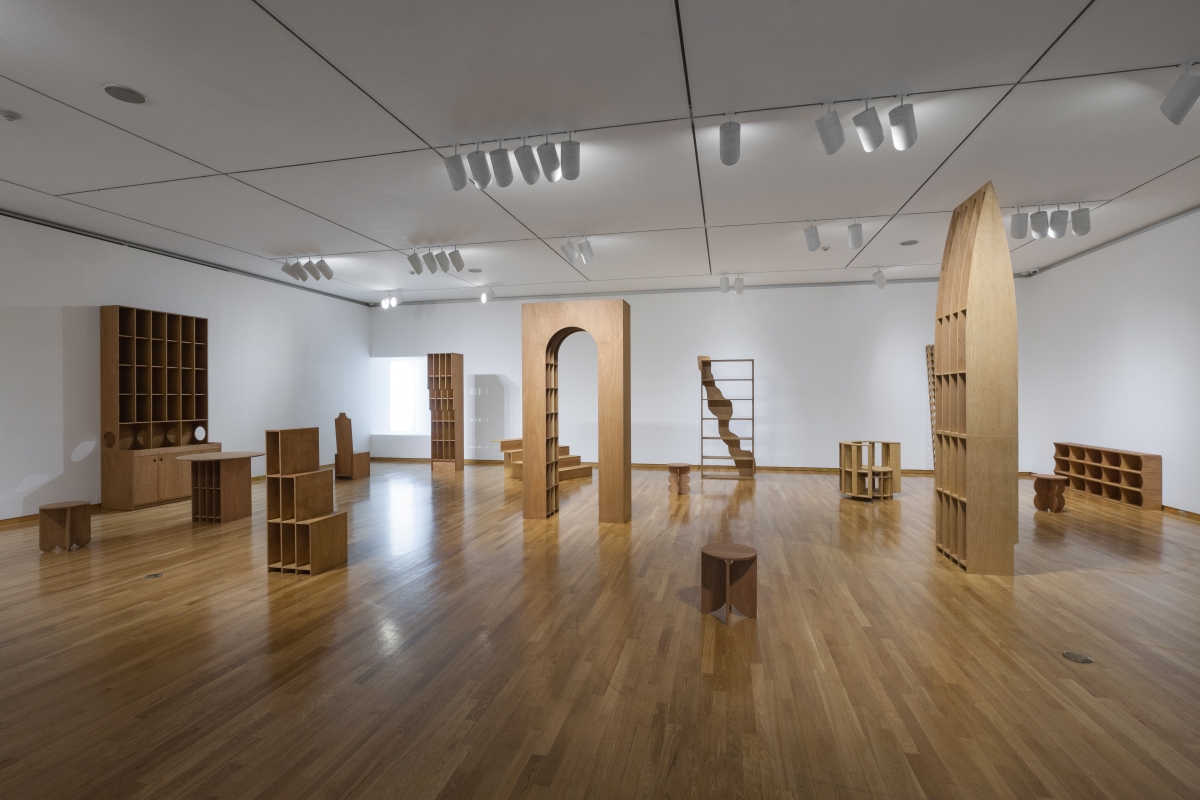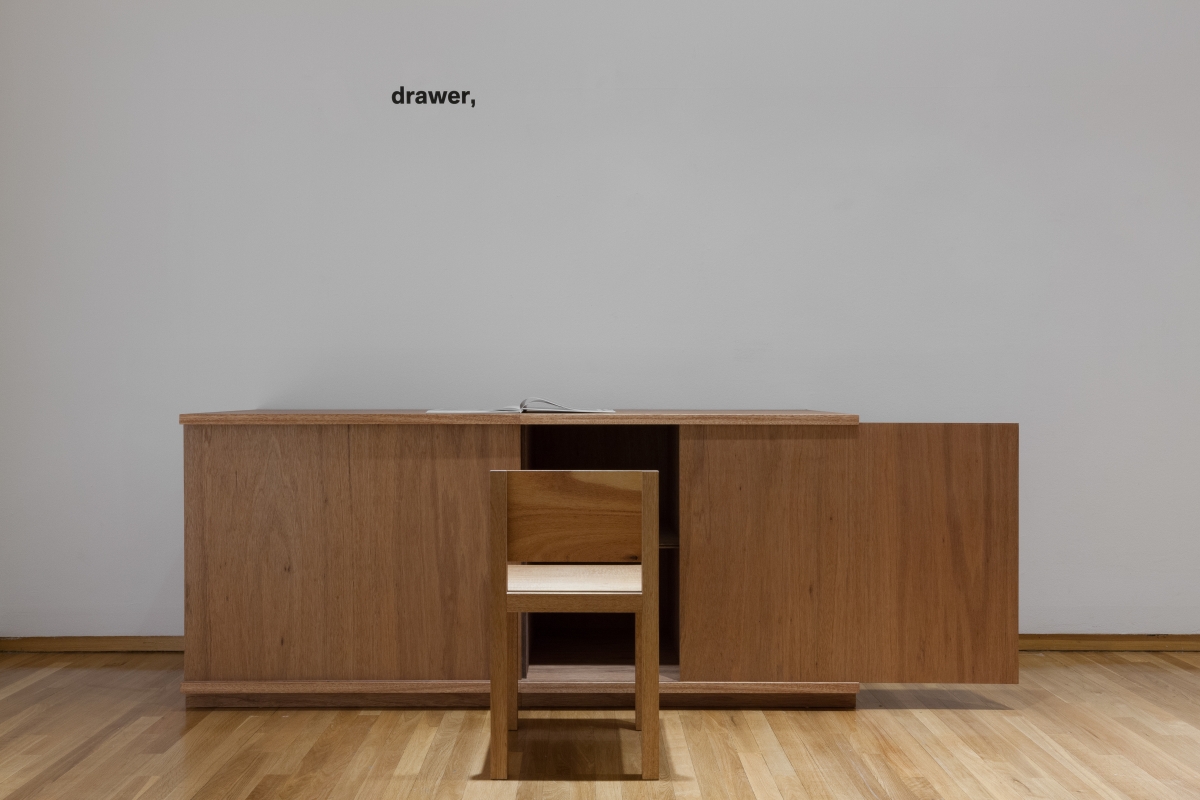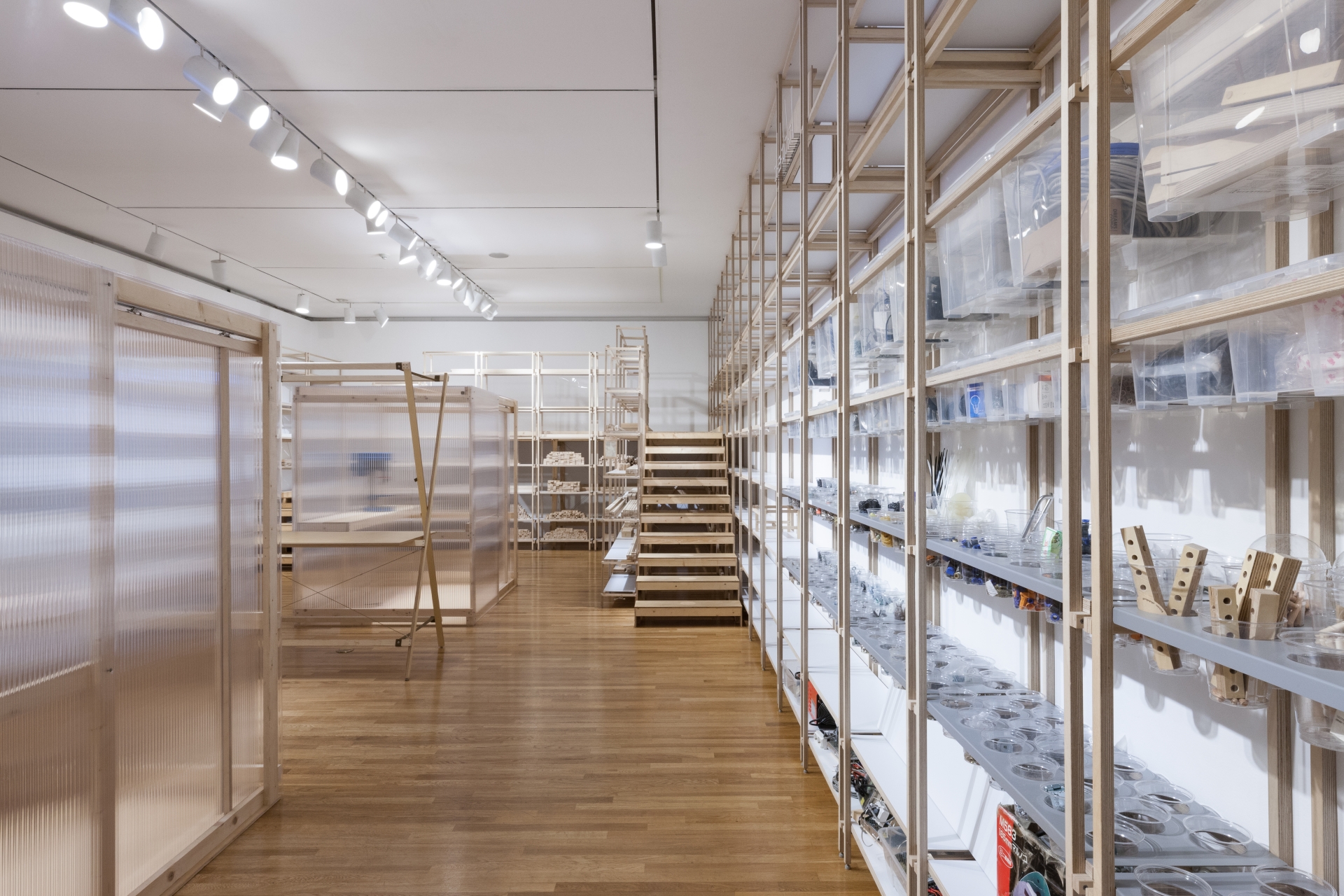Sustainability: Design and Society
When you enter the exhibition hall, you face the shelves arranged along the first-floor wall. This simple form of a wooden cabinet called ‘Pepe Furniture’ is produced and sold at the Garagegage. On the website of the Garagegage, the shop introduces itself as ‘a store that creates and sells storage furniture that is useful, simple in appearance, and reasonable in price’ and they make ‘cabinets, bookcases, chairs and tables with birch wood and makes small items with scrap lumber’. What stands out here is the aim to get the most out of the least amount of material. Using the simple substance of wood, without any additional material, they maximise the role of the storage closet. Seo Dongjin (professor, Kaywon University of Art and Design) has suggested that ‘they offer a different social ideal from that of the past, which designed objects using new materials to symbolise possibilities for future society, such as plastic or polyvinyl chloride. The tendency of the young designers in this exhibition sets forth a movement that aims to continue the community we live by using the materials left behind for the sustainable future’.
The Mun Seungji’s Brothers Collection on the second floor enacts more aggressive attitude on how to use the maximum amount of material. The Brothers Collection is the iron version of the Four Brothers, which was made from a piece of plywood to minimise the amount of discarded wood. Mun Seungji noted, ‘Almost the same amount of wood was thrown away in the making of one chair. Why don’t people think about way they can reduce their waste in the first place? This was the first conception of Four Brothers’ (covered in SPACE, issue 611).
Locating solutions to environmental problems is also linked to local sustainability issues. The Zero Cushion of Zero Space Inc. is made of scabbard fabric produced in small sewing factories in Changsin-dong. After the large-scale overseas transfer of apparel factories, the sewing factories left in Changsin-dong had to take on subcontracting orders from the wholesale market as their main work, and the order was reduced in the spring and autumn as it turned to off-season. Therefore, in order to construct an economic structure that enables sewing factories to secure stable work, even during off-season, Zero Space Inc. has been branded as Zero Waste Design, minimising the abandoned fabric with the aim of creating cooperation with local small business owners. In addition to Zero Cushion, the piece Mapping of Relations observes the collaborative relationship between Zero Waste Design clothes and Changsin-dong sewing factories.
They encourage consumers to buy products that engage with a new way of life known as ‘sustainable life’, rather than to see the role of design as grandiose sloganeering or statements about the future. As the consumption of environmentally friendly products lead to additional efforts, such as securing the economic base of the community, one can see progress from the existing ‘good design’ which only emphasised good consumption.

씨오엠, ‘커스텀-메이드’, 합판, 왁스 마감, 가변설치, 2018
COM, CUSTOM-MADE, Plywood, wax finish, Dimensions variable, 2018
Relation: The Coexistence of Producer and Consumer
Kim Heewon (assistant curator, Kumho Museum of Art) stated that ‘In the past, consumers and producers were clearly differentiated. However, now social networks and various media have developed, and consumers have become more interested in the production process and even engage with it themselves. The exhibition focused on the point where this ‘relationship’ occurred.’
Font design studio Yang-Jang is an excellent example of this relationship. On the third floor, 3,286 letters are displayed on the floor and walls (Glyphs). The font used in this letter is called ‘Penbatang Regular’, which was developed as a Korean typeface that feels like speedy feeling like English italic font by taking advantage of the characteristics of the pen, which is a writing instrument widely used today. Yang-Jang changed and complemented the font by providing a prototype to fellow designers during the development process, and released the incomplete Penbatang Regular in tumblbug, a crowdfunding web service, so that the user participated in the font making through sponsorship, even at the earliest development stages of the design.
The various furniture pieces (CUSTOM-MADE) made by COM appear at first sight like unique sculptural forms. It is because those were created in the process of coordinating the needs of clients such as ‘an environment where cats can live’ and ‘furniture that can solve the problem of the empty hallway of a store’.
In CUSTOM-MADE of COM and Penbatang Regular of Yang-Jang, consumers are participating in the production process, coexisting alongside producers and consumers. Here, the designer is neither an experimenter who leads the radical design experiment nor a planner who is involved in mass production, but a communicator, who meets with the consumer, and accepts and collaborates with their opinions.

flat.m, Sliding-door Cabinet, Lauan plywood, wax finish, 85(h)×97(w)×70(d)cm, 2017
Cultural Medium: Design Connects Individual Subjects
The interior design studio flat.m puts different types of Jang, a word that refers to a range of furniture for storage, throughout the showroom and displays documents about the Dunchon Jugong Apartment and shows how the Jang changes according to the residence style. It shows that today’s apartments use built-in Jang made of plywood for efficient use of the narrow space, whereas the residents of detached houses, which were a typical residential style only a few decades ago, had a separate form of a piece made of wood.
6699 Press is a graphics studio and independent publisher that publishes the stories of minorities, who have no voice in society. Their work 6699 is a performance reading ten books they have published so far. On each of the three channels, one reads an autobiographical story written by oneself, while the other two channels each show subtitles and a person listening to it.
These two projects illustrate the role of design as a cultural medium. The flat.m demonstrates the way in which design is associated with the memories of the housing style of the home, a small unit of community and public and becomes a mediator of a particular lifestyle by showing these through various Jangs. By telling the tales of minorities, they metaphorically show that one can speak the meaning of the public and the community can be formed when we look and recognise these small, often invisible voices.
What are the characteristics present in this way of voicing ‘publicness’, perceived through the sense of community and the design of the seven participant artists? They are essentially located in the structure of consumption and production, and they are commercial because they can fulfil their function when they are used for commercialisation and sale. However, each work that is concerned with resolving problems in the community and proposes sustainable alternatives shows loose solidarity in regard that it draws individual participation through design under the theme of ‘public’. One might question whether their approach is ultimately a strategy to make things more attractive, justify the process of consumption, to generate more sales revenue, and ask about the authenticity of the public and community they show. However, it seems clear that whatever form they are, their design does not just act as an attractive object, but as a medium of culture that generates various ‘relationships’. This is why we must not only focus upon the way that participant designers express the meaning of the public as simply a commercialised property or act.





